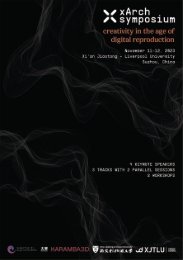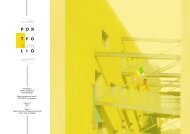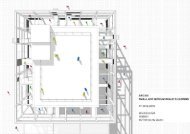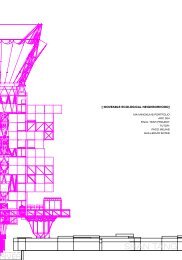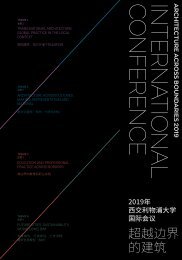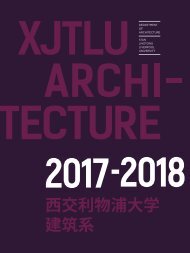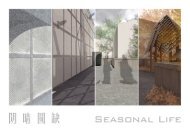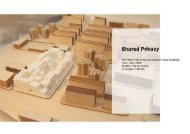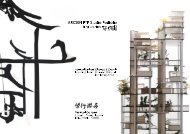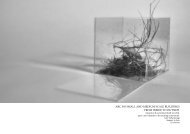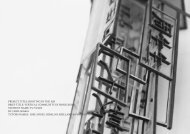YEARBOOK 2018 - 2019 | XJTLU DEPARTMENT OF ARCHITECTURE
The sixth edition of the yearbook of the Department of Architecture at Xi'an Jiaotong-Liverpool University presents student works created during the academic year 2018 - 2019. The yearbook exemplifies the new model for Chinese architectural education for which the department was commended by the Royal Institute of British Architects (RIBA). It is also a showcase of the creative culture that has guided our students towards successful international careers as responsible and creative architectural designers. The Department of Architecture at XJTLU offers RIBA Part 1, 2 and 3.
The sixth edition of the yearbook of the Department of Architecture at Xi'an Jiaotong-Liverpool University presents student works created during the academic year 2018 - 2019. The yearbook exemplifies the new model for Chinese architectural education for which the department was commended by the Royal Institute of British Architects (RIBA). It is also a showcase of the creative culture that has guided our students towards successful international careers as responsible and creative architectural designers. The Department of Architecture at XJTLU offers RIBA Part 1, 2 and 3.
Create successful ePaper yourself
Turn your PDF publications into a flip-book with our unique Google optimized e-Paper software.
179<br />
180<br />
BRIEF G<br />
Fashion Hub:<br />
Regenerating Yangpu’s Waterfront<br />
DIVING INTO NATURE<br />
Yao Yuzheng | 姚 羽 筝<br />
<strong>2018</strong>-<strong>2019</strong> <strong>YEARBOOK</strong> Xi’an Jiaotong-Liverpool University Department of Architecture 西 交 利 物 浦 大 学 建 筑 系<br />
An increasing awareness of heritage (particularly architectural heritage),<br />
an open debate about production and creativity, and a necessary vital<br />
urban regeneration are three of the most important and recurrent topics<br />
that frame current architectural and urban reflection in China.<br />
The incredible development of urban settlements has often produced<br />
a shapeless continuous stain that has destroyed amazing architectural<br />
pieces and natural rural landscapes that had been created by a centuriesold<br />
anthropization. We also find an alarming lack of a cultural nucleus.<br />
This situation can be also extended to industrial heritage and urban<br />
landscapes.<br />
On the other hand, China is currently developing an ambitious plan<br />
regarding creative initiatives. Being aware of its enormous potential as a<br />
producer country, the Chinese government wants to promote activities<br />
related to creativity and take them to their highest level. In this context,<br />
this brief considers that the culture of fashion offers an interesting<br />
field of exploration. Shanghai is in the process of becoming a fashion<br />
reference centre. New brands are appearing and a renewed interest<br />
arises to recuperate the Chinese tradition and update it, creating new<br />
trends.<br />
The present brief wants to link all the previous questions, reflecting<br />
about urban regeneration, working in an interesting industrial settlement<br />
in Shanghai and proposing a programme related to fashion creation and<br />
production. Yangpu’s Waterfront offers a great location to reflect about<br />
urban regeneration as this area is currently being developed as a new<br />
trendy part of Shanghai.<br />
The present brief proposes the design of a Fashion Hub consisting<br />
of a School of Fashion, a Museum of Chinese Fashion and Couture<br />
and a Residence and Hostel for students, academics and visitors.<br />
By undertaking this, students will tackle three key priorities in<br />
Contemporary China: regeneration of urban areas, transformation of<br />
waterfronts, and development of creative activities.<br />
TEACHING TEAM<br />
Juan Carlos Dall’Asta<br />
José Ángel Hidalgo Arellano




